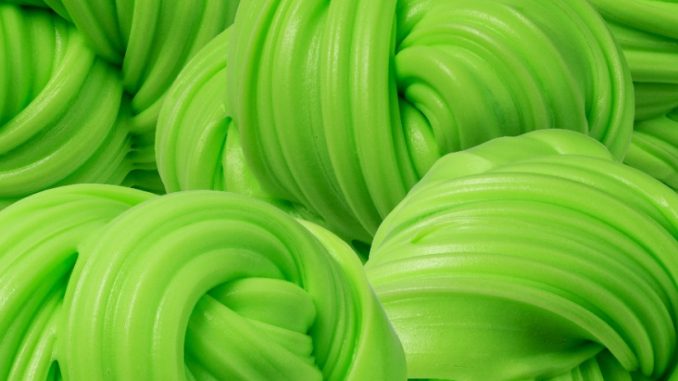
Extracellular polysaccharides (EPS) or exopolysaccharides as they are also often called are produced by both prokaryotes (eubacteria and archaebacteria) and eukaryotes (phytoplankton, fungi, and algae). They are part of a group of microbial polysaccharides that are highly diverse and multifunctional. These will also include the intracellular polysaccharides and structural polysaccharides (Kumar et al., 2007).
These extracellular polymeric substances (EPSs) are thus natural polymers of carbohydrates of high molecular weight. They are secreted by microorganisms into their environment. These polymers will attach to the outer cell walls of bacteria in the form of capsules and/or as slime in biofilms. EPSs then establish the functional and structural integrity of biofilms, and are considered the fundamental component that determines the physicochemical properties of a biofilm.
EPS also contain proteins, DNA and lipids which confer specific properties that are highly unusual.
Exopolysaccharides are commonly found in food, cosmetic and consumer healthcare applications as hydrocolloids e.g. xanthan gum from Xanthomonas campestris. These are used as stabilizers and thickeners or texture modifying agents. They help improve appearance, texture through thickening and raising shear viscosity, and functionality. For product developers, they have also served to generate clean label products, to reduce syneresis, to reduce and control textural defects such as graininess in fermented milk products, and to reduce production costs.
In one example, the EPS coming from lactic acid bacteria (LAB) has been used to raise the viscosity of low-fat Greek-style yogurt (Schmidt et al., 2016) and for improved suspension of smaller protein particles found in low-fat fresh cheese (Hahn et al., 2014).
EPS also interact with proteins and lipids too which modify their properties to a beneficial or detrimental extent. They are also postbiotics with therapeutic benefits.
Slime-producing bacteria are often used as starters in the production of yogurt and kefir because they help to raise the viscosity and thickness of the cultured food.
Purification of EPS
Exopolysaccharides are isolated from bacteria, and purified by ion-exchange and gel-permeation chromatography.
Some Specific Extracellular Polysaccharides
The Lactic acid bacteria (LAB) are found in many fermented foods and produce a range of exopolysaccharides. They have unique physical and rheological properties that merit their application in food industry as stabilizing, thickening and gelling, and emulsifying agents (Hassan, 2008). Typical applications include fermented milk products kefir, yogurt and cheese.
A good example of an EPS is produced by Lactobacillus plantarum C88. It produces a neutral exopolysaccharide (EPS), designated LPC-1 (Zhang et al., 2013). It has an average molecular weight of 1.15 × 106 Da, and is composed of galactose and glucose with a molar ratio of 1:2.
It’s not clear if these are unique properties to this Lactobacillus but this neutral EPS has some useful antioxidant properties. It can in vitro scavenge hydroxyl and 1,1-diphenyl-2-picrylhydrazyl (DPPH) radicals. It also has a protective effect on H2O2-induced Caco-2 cells oxidative injury. It can inhibit the formation of malondialdehyde (MDA) and raises the activity of superoxide dismutase (SOD) and total antioxidant capacities (T-AOC) in a dose-dependent manner.
As a postbiotic, this EPS could be exploited for scavenging reactive oxygen species (ROS), the up-regulation of enzymatic and non-enzymatic antioxidant activities, and reduction of lipid peroxidation.
Isolation and screening of LAB for EPS production
EPS from Lactobacilli can be isolated and screened for using this standard methodology.
Samples were serially diluted in sterile distilled saline solution (0.85% w/v NaCl), plated on to MRS agar (De Man et al., 1960), and incubated anaerobically at 30 °C until the appearance of single colonies. Colonies were randomly selected from the plates and purified by streaking onto MRS agar plates. Presumptive LAB isolates were preliminary selected based on Gram staining and catalase tests. The purified cultures were preserved on MRS agar slants at 4 °C for routine use and in MRS broth supplemented with 20% (v/v) sterile glycerol at −70 °C for long-term storage. They were sub-cultured twice before use.
The selected LAB isolates were screened for their ability to produce EPS by propagation on MRS agar at 30 °C for 2 to 3 d. The isolates that produced mucoid colonies were recorded as capable of producing EPS. To measure the EPS amount, liquid fermentation of each isolates were then performed in MRS broth at 30 °C for 24 h, and the EPS was purified following the procedure described below. The EPS produced by different isolates was estimated by phenol-sulfuric acid method (Dubois et al., 1956) using glucose as a reference standard (Torino et al., 2001).
References:
Ariga, H., Urashima, T., Michihata, E., Ito, M., Morizono, N., Kimura, T.,and Takahashi, S. (1992). Extracellular polysaccharide from encapsulated Streptococcus salivarius subsp. thermophilus OR 901 isolated from commercial yogurt. J. Food Sci. 57: pp. 624–628
, , . (1960). A medium for the cultivation of lactobacilli. J. Appl. Bacteriol. 23 pp. 130–5.
Hassan, A.N. (2008) Journal of Dairy Science 91 pp. 1282–1298. .
Suresh Kumar, A., Mody, K., & Jha, B. (2007). Bacterial exopolysaccharides–a perception. Journal of Basic Microbiology, 47(2), pp. 103-117 (Article)
Zhang, L., Liu, C., Li, D., Zhao, Y., Zhang, X., Zeng, X., … & Li, S. (2013). Antioxidant activity of an exopolysaccharide isolated from Lactobacillus plantarum C88. International Journal of Biological Macromolecules, 54, pp. 270-275.

Leave a Reply